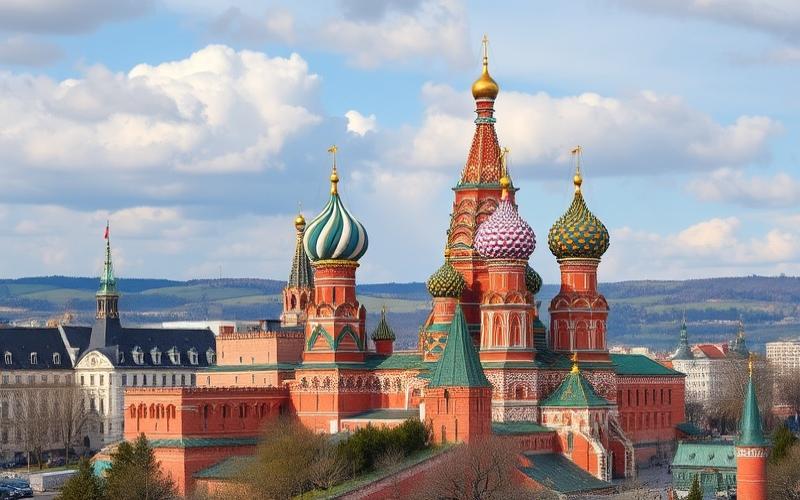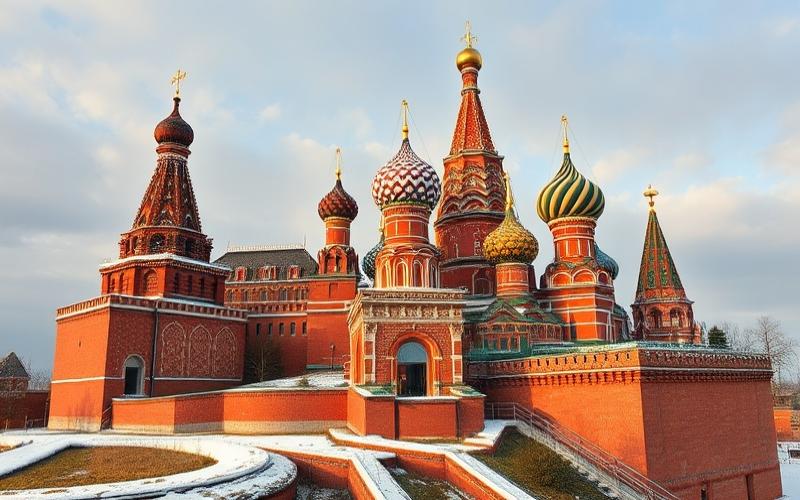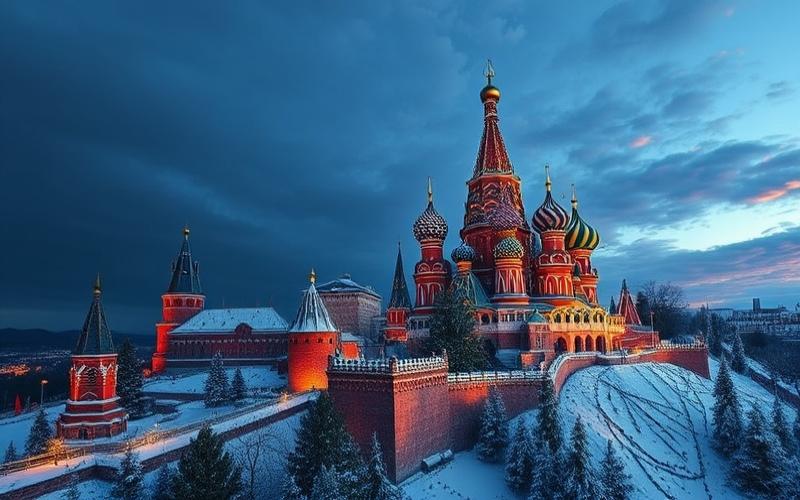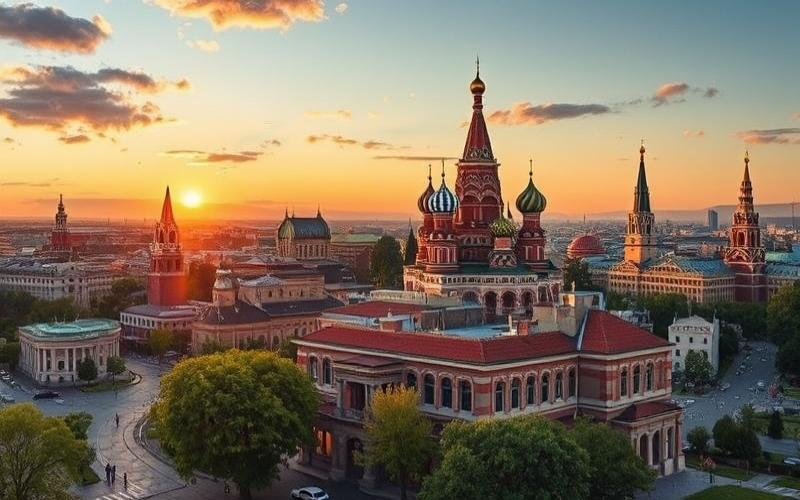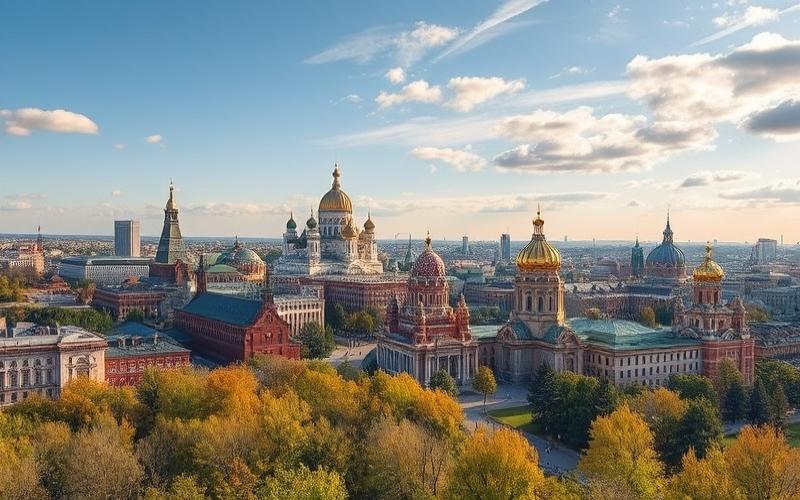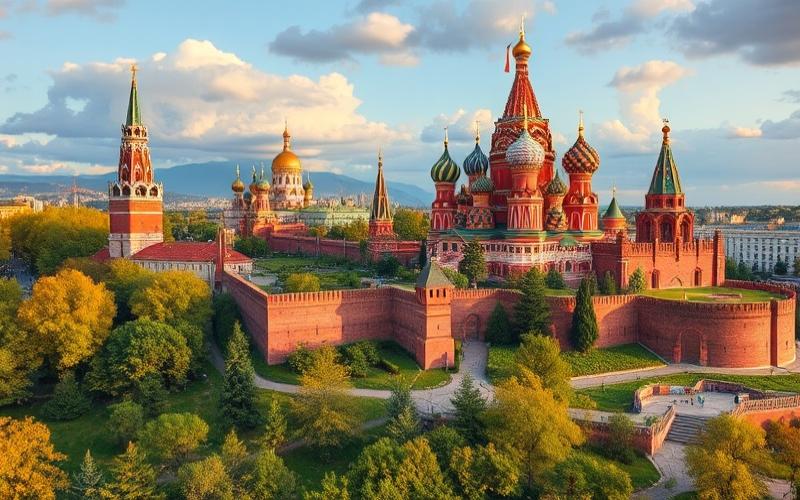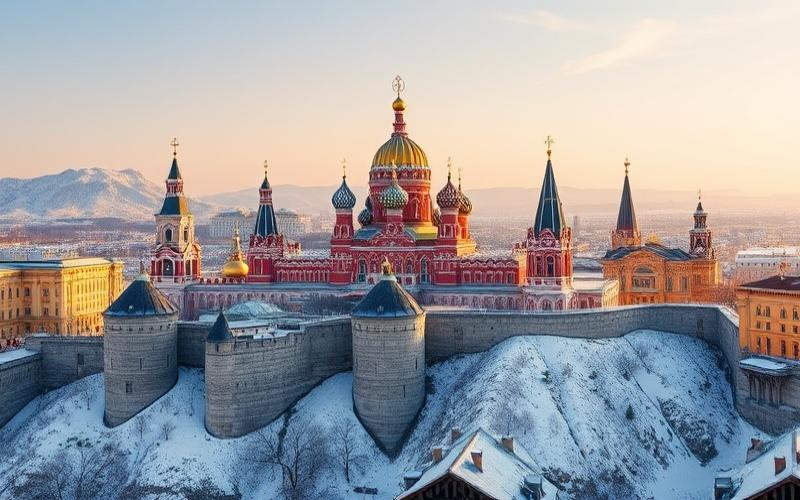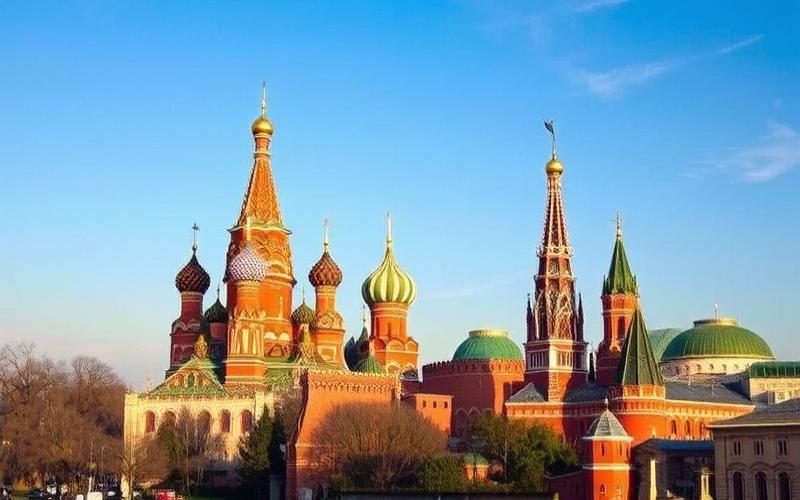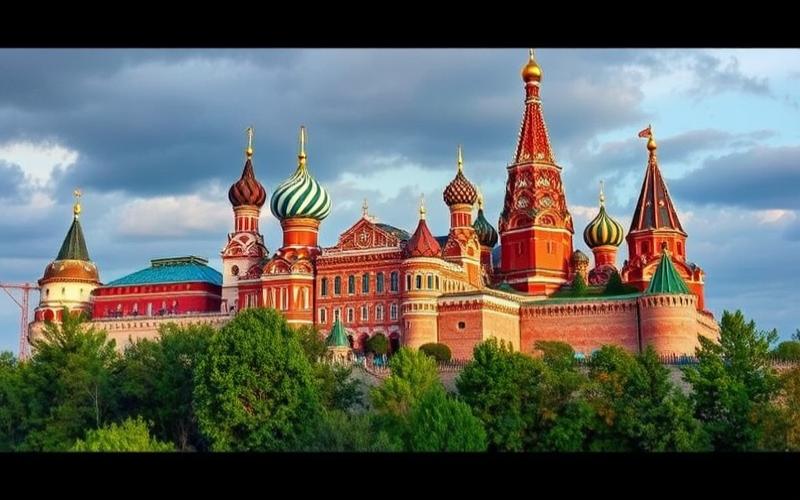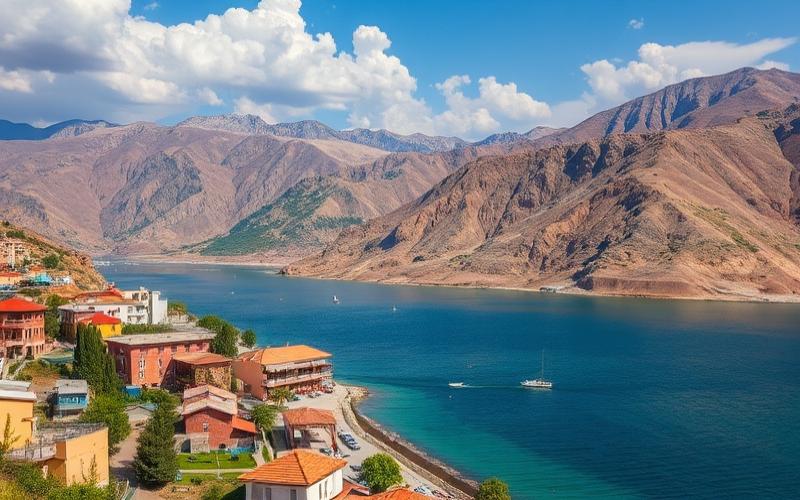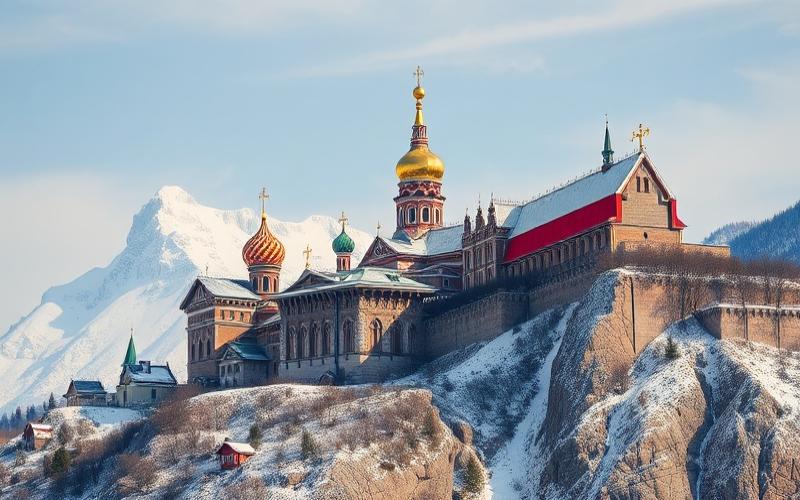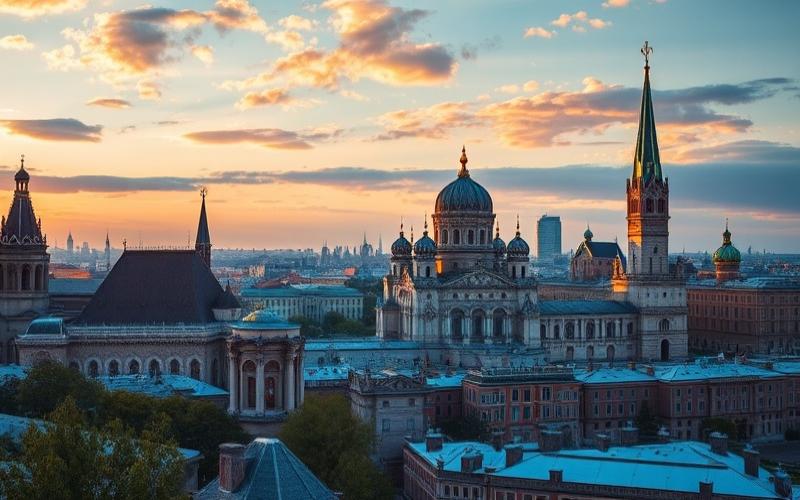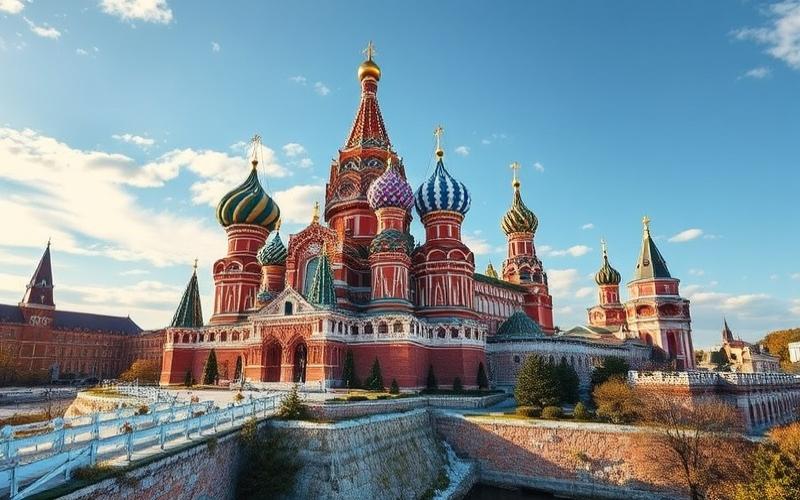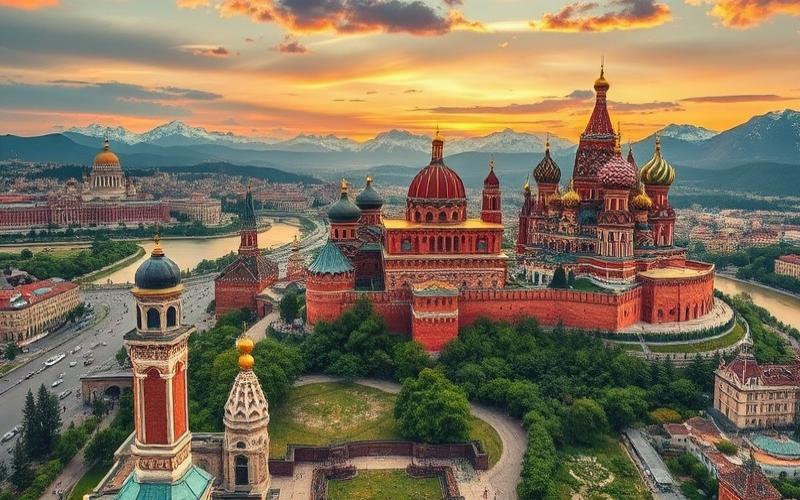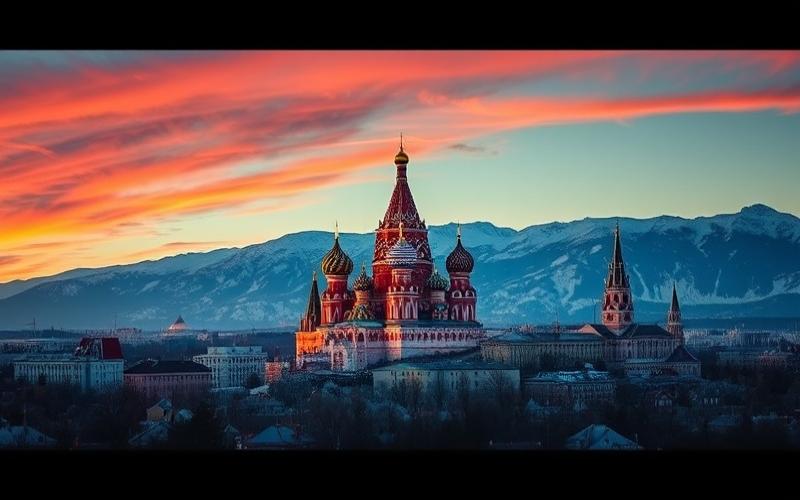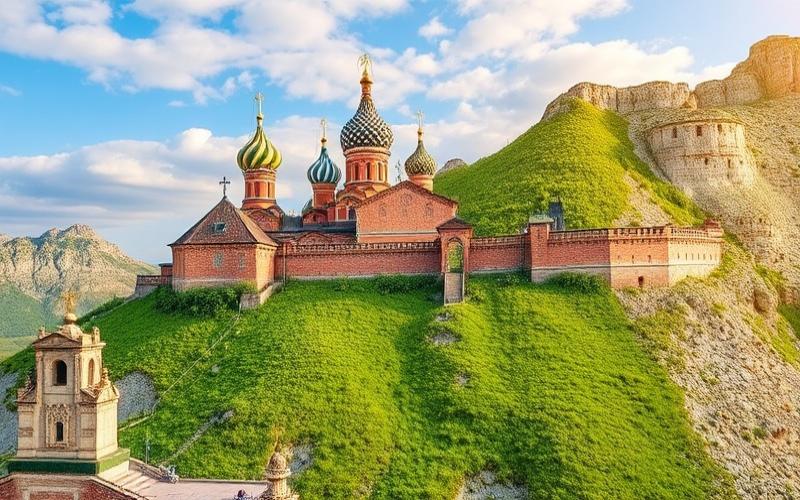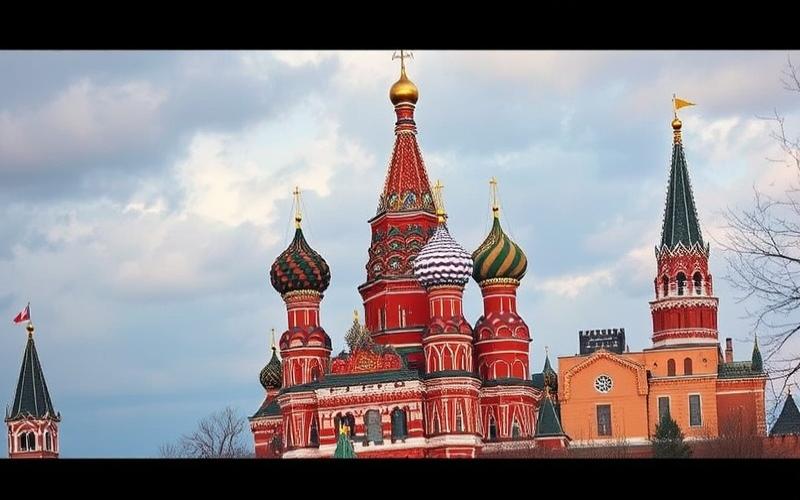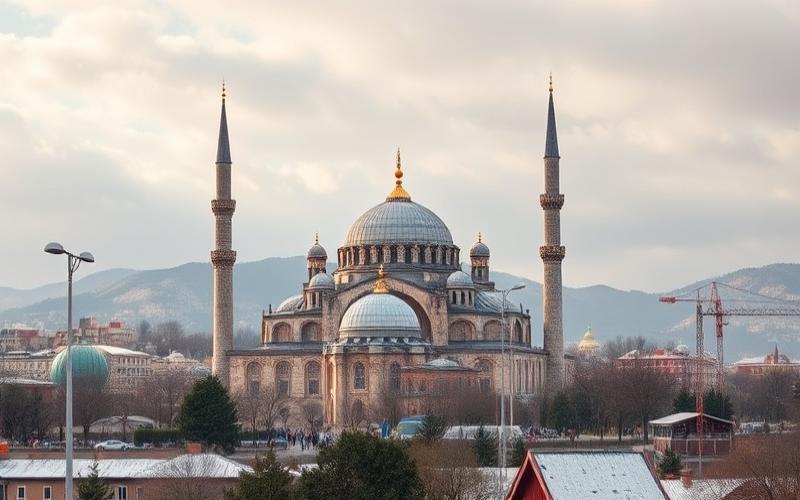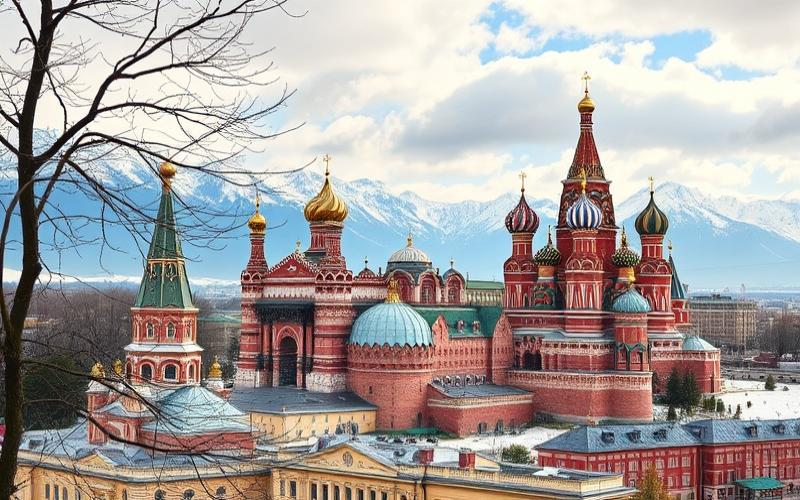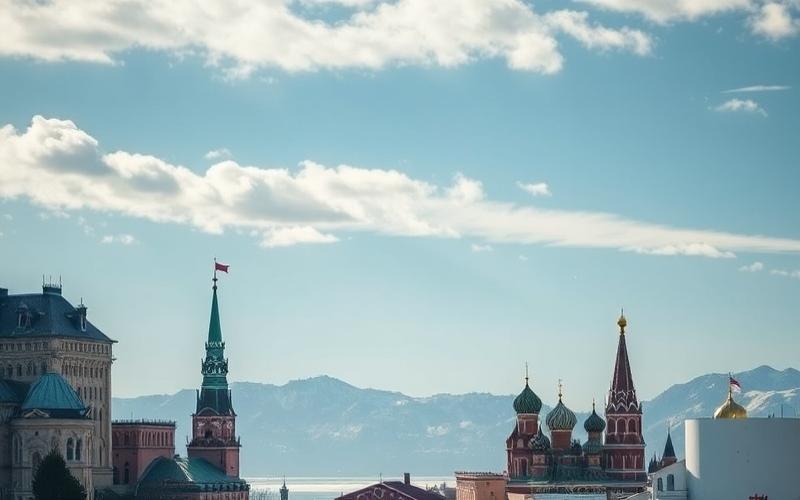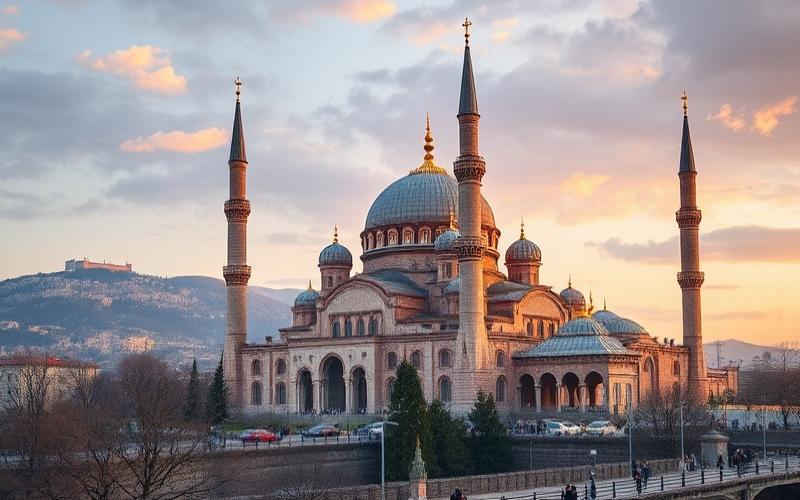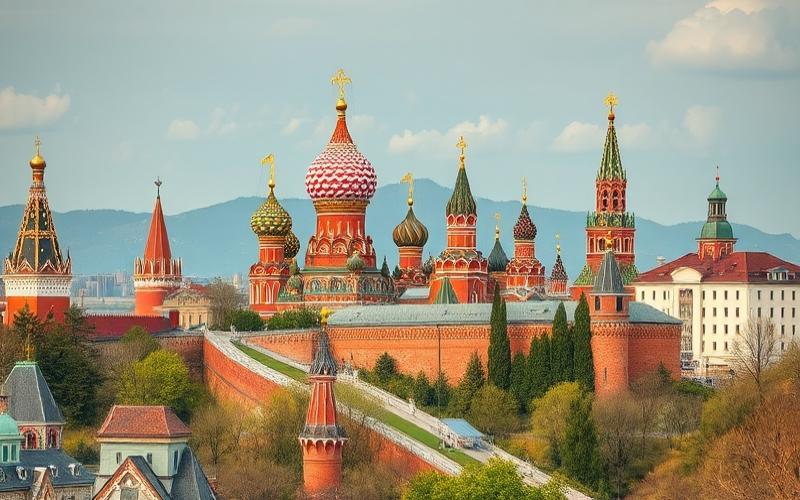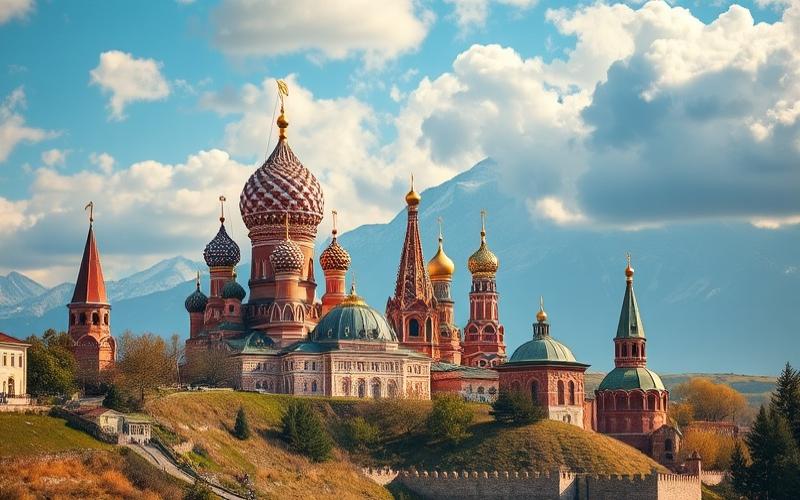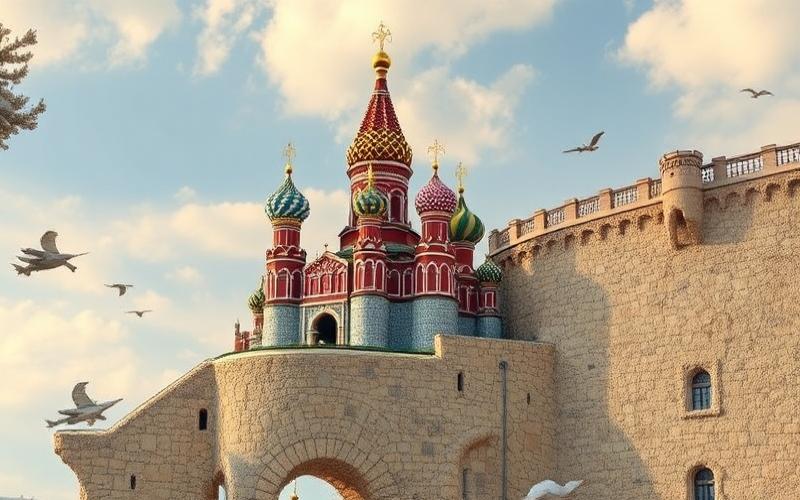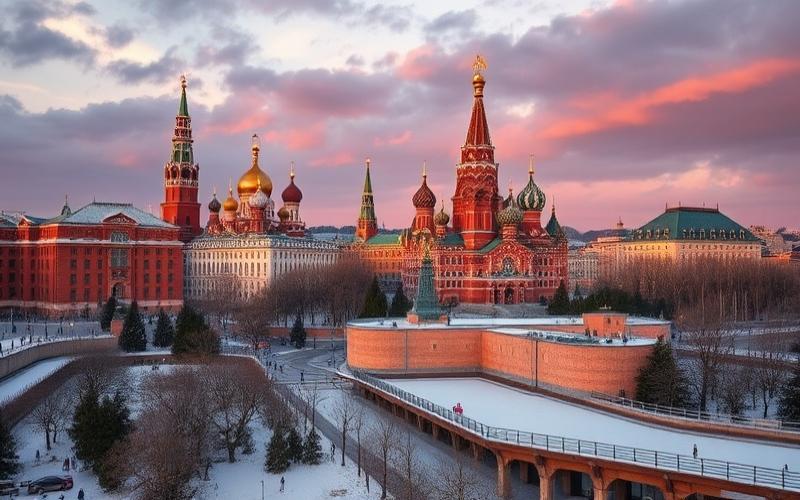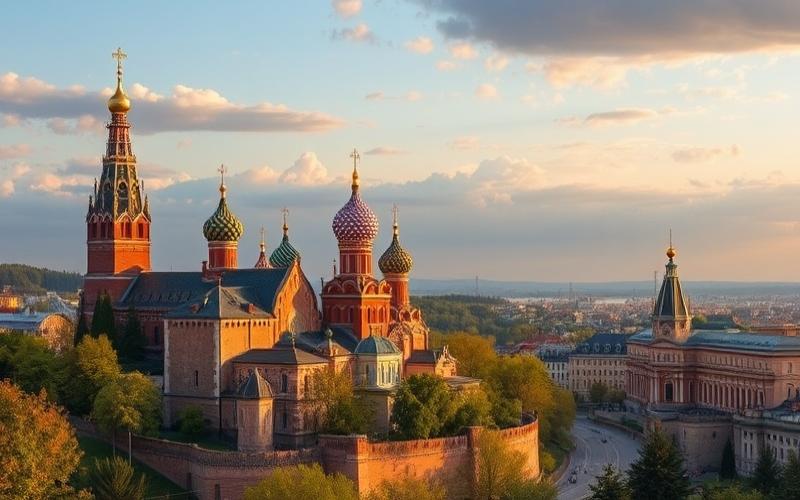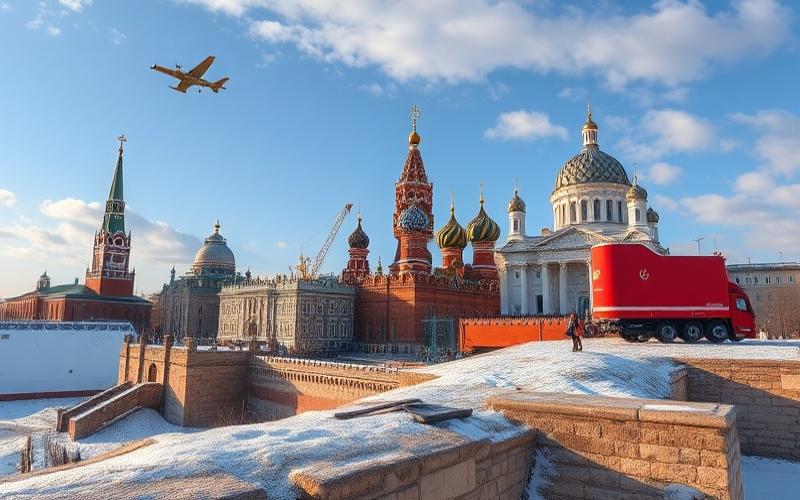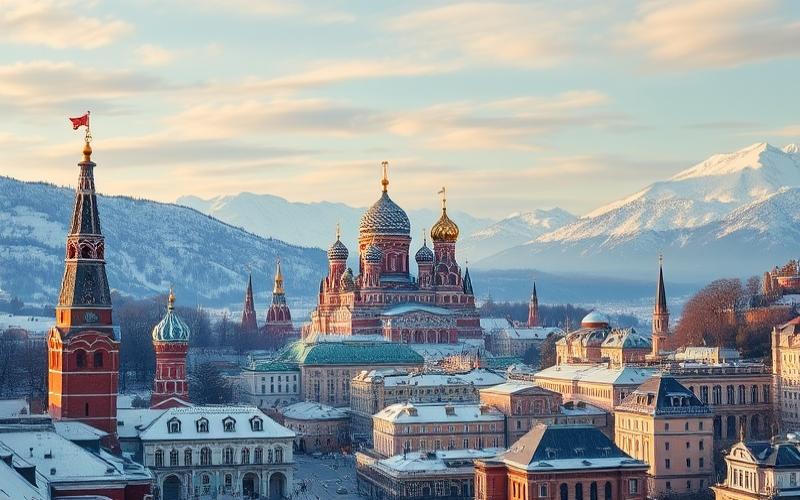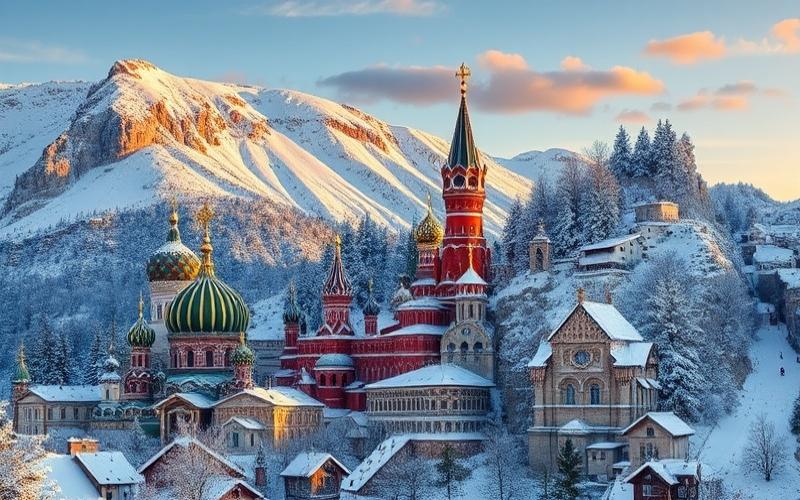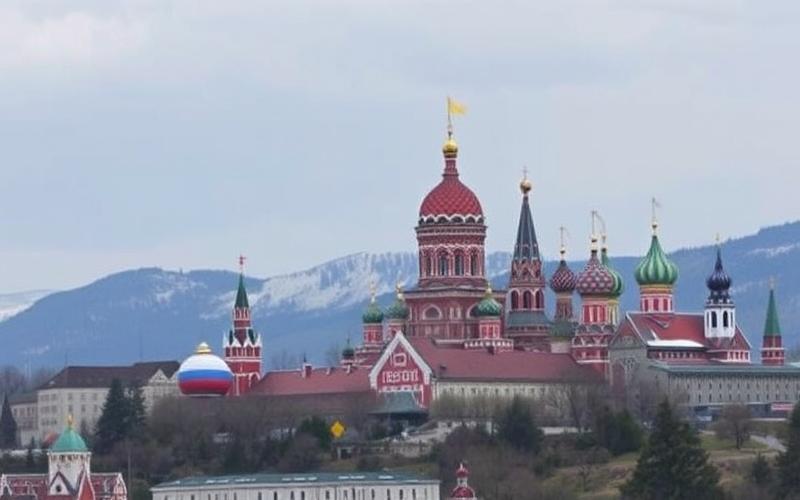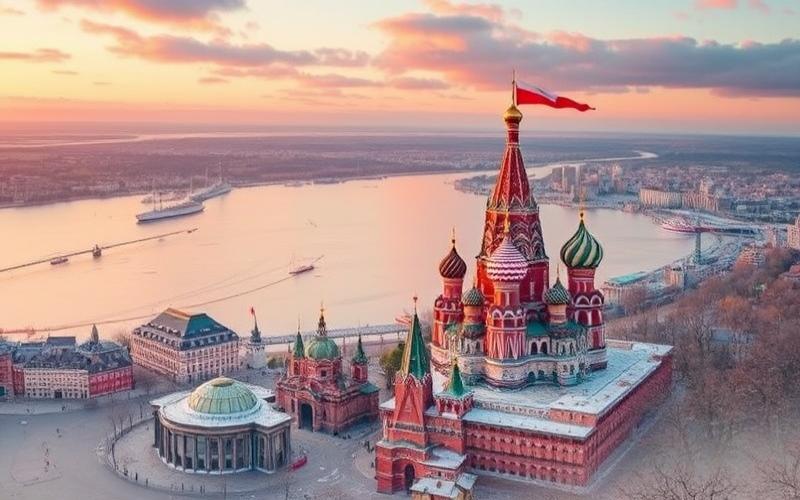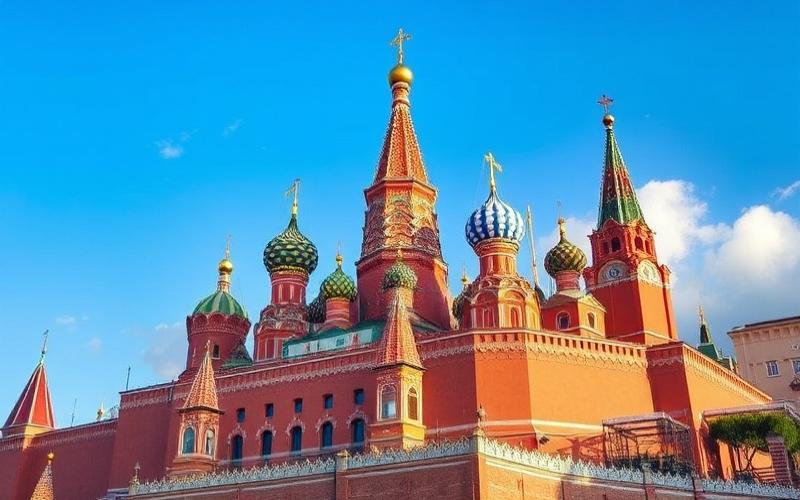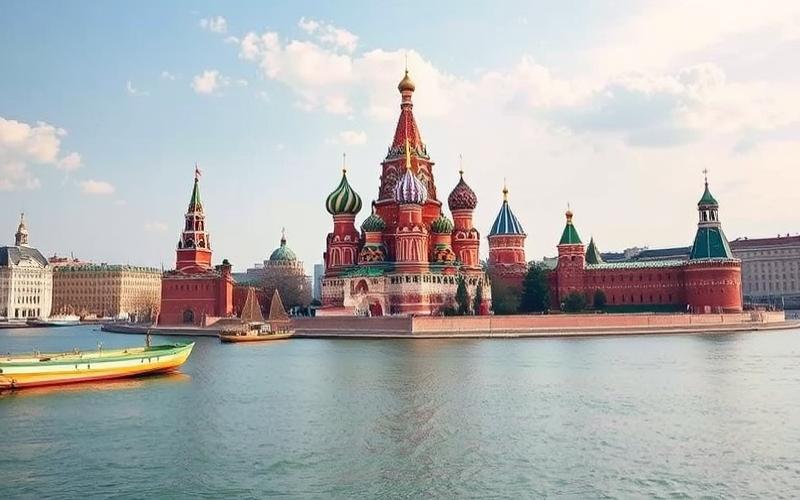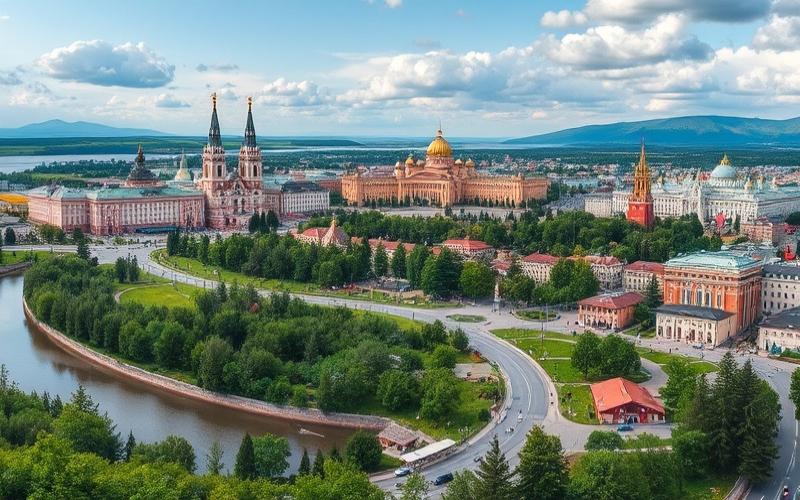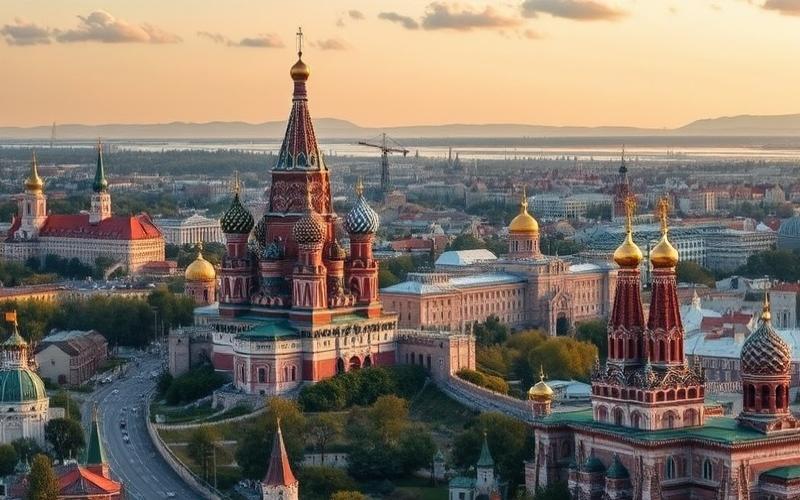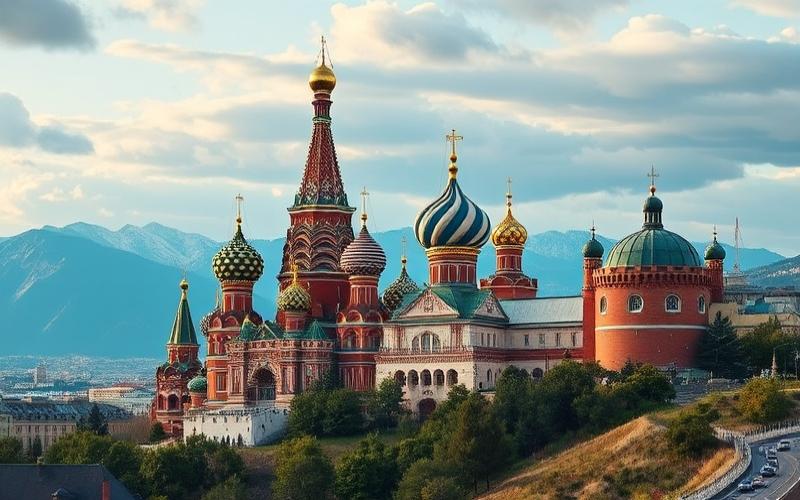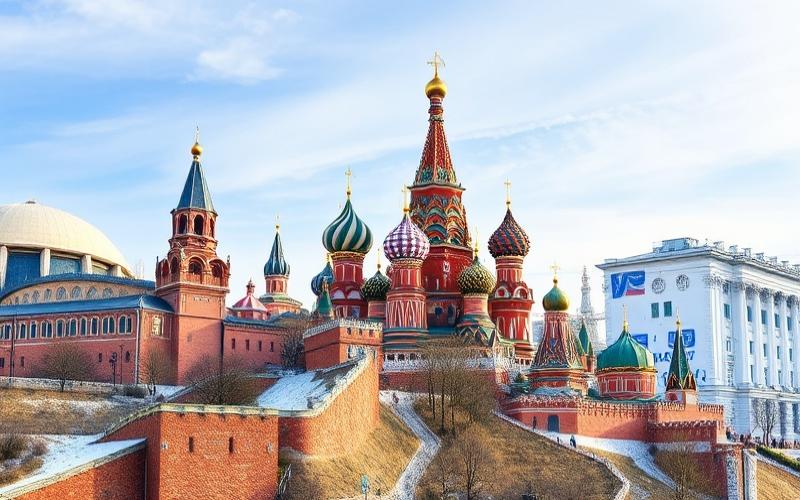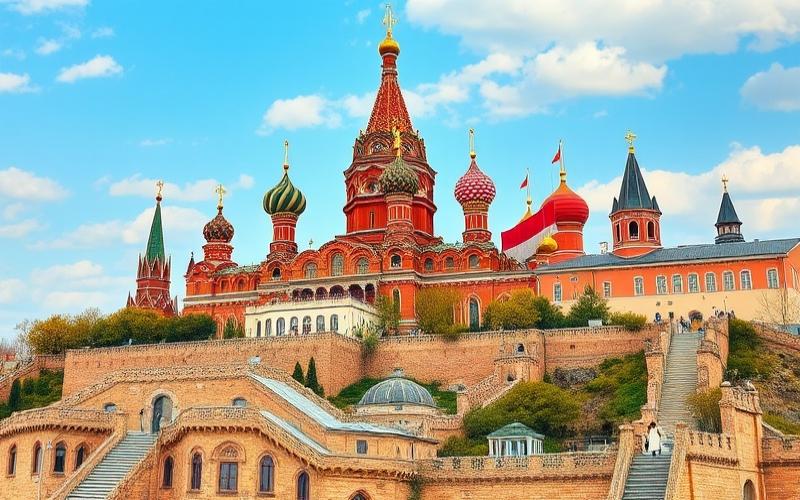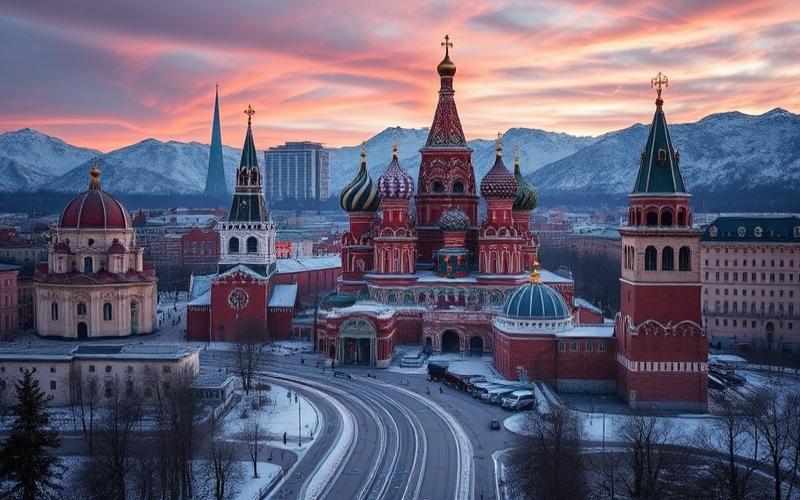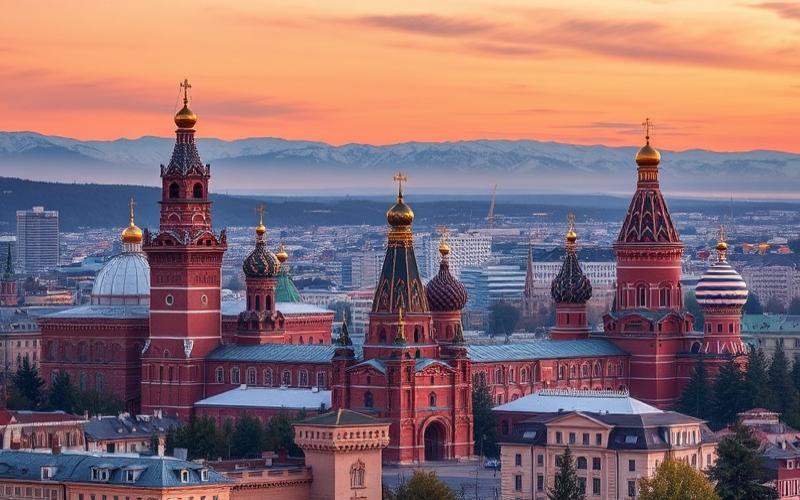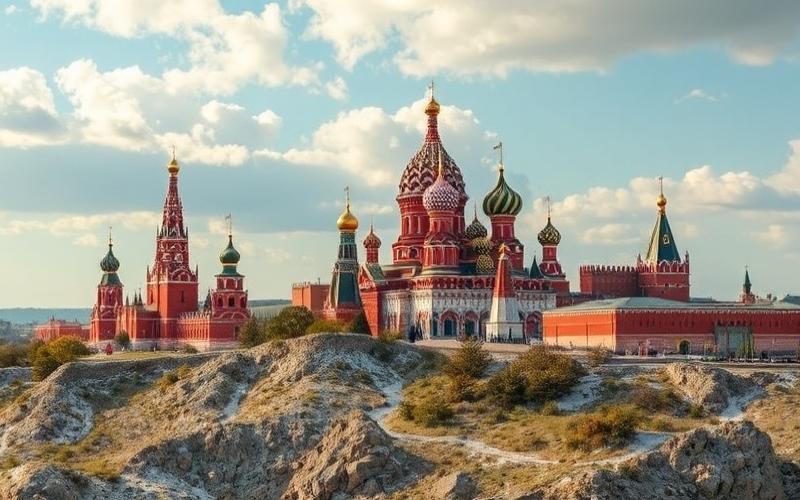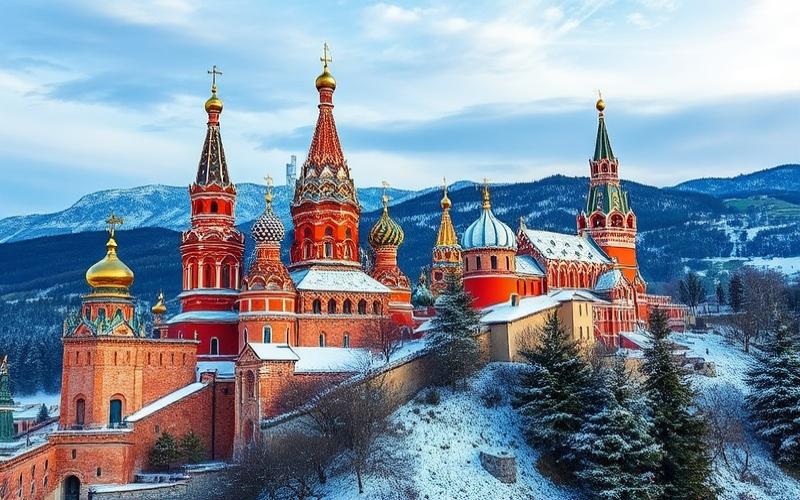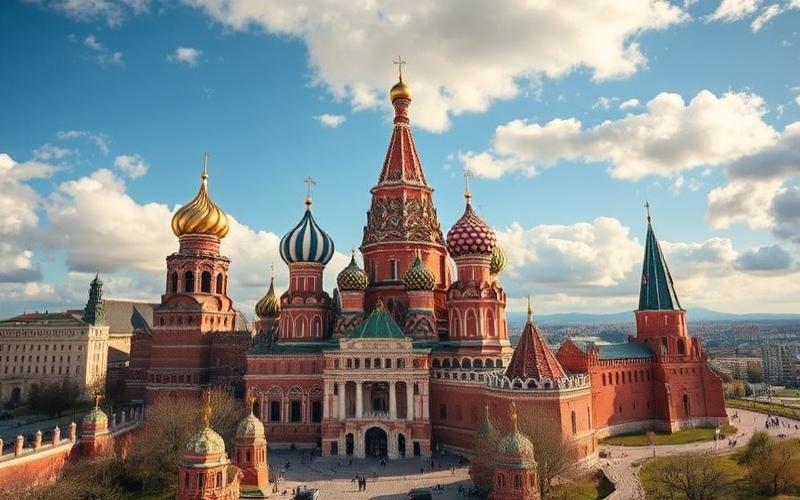
 Published on and written by Cyril Jarnias
Published on and written by Cyril Jarnias
Navigating the vast expanse of Russia might seem like a daunting task, but with its diverse and efficient public transportation network, getting around becomes a fascinating experience. From the sophisticated Moscow metro to the picturesque trams of Saint Petersburg, each mode of transport offers a unique glimpse into the Russian soul.
This practical guide will reveal essential tips for smart travel by leveraging the potential of these well-developed infrastructures, allowing you to discover Russia with ease and comfort.
Discovering Transportation Modes in Russia
Public Transportation Modes in Russia
| Transport Mode | Main Cities | Features | Operating Hours | Average Fares | Payment Options |
|---|---|---|---|---|---|
| Metro | Moscow, Saint Petersburg, Kazan, Nizhny Novgorod, Samara, Yekaterinburg | Fast, crowded, artistic stations (especially in Moscow), dense network downtown but sparse in suburbs | Generally 5:30 AM – 1:00 AM | ~55 rubles/trip (Moscow) | Paper tickets; Troika card (Moscow), Podorozhnik (SPB); contactless payment |
| Bus | All major cities | Main mode outside downtown; extensive suburban network; some express buses/minibuses (“marshrutkas”) faster | Varies by city (~6 AM-11 PM) | ~65-75 rubles/trip | Tickets onboard or machines; integrated with metro/city card |
| Trolleybus | Moscow*, Saint Petersburg*, other major cities (*network recently reduced) | Eco-friendly but slow and less comfortable than bus; tendency to disappear in some cities | Similar to buses | Same as bus | Same |
| Tram | Saint Petersburg, Yekaterinburg, Ufa and other large urban areas | Practical in some outlying or industrial districts; sometimes outdated network | Similar to buses | ~65-75 rubles/trip | Same |
Trolleybuses are gradually being replaced by modern buses in the largest metropolitan areas.
Advantages and Disadvantages of Main Modes
Metro
- Advantages: high speed (42 km/h average in Moscow), exemplary punctuality even during rush hours, spacious and safe stations.
- Disadvantages: long distances between stations in suburbs; lower density outside downtown; can be crowded.
Bus
- Advantages: serves entire city including areas not covered by metro.
- Disadvantages: slowed by road traffic; irregular schedules depending on route.
Trolleybus
- Advantages: eco-friendly; same price as bus.
- Disadvantages: reduced speed; limited comfort on old equipment.
Tram
- Advantages: useful for reaching outlying districts poorly served otherwise.
- Disadvantages: old lines sometimes slow or outdated.
Practical Tips for Travelers
Use the Troika card (Moscow) or Podorozhnik (Saint Petersburg) to travel easily across all urban networks with a single medium. Rechargeable at all major stations.
Download useful apps:
- Yandex.Metro — metro route planning
- Yandex.Transport — real-time surface/bus/tram/trolley schedules
- Citymapper — multimodal routes
Stay vigilant: pickpockets especially on crowded metro lines. Frequent ticket checks in all urban vehicles. Always respect systematic ticket validation even if access seems free.
Russian public transportation is mostly reliable and secure. Incidents are rare thanks to visible police presence particularly on the metro network.
Good to Know:
In Moscow and Saint Petersburg, the metro is fast and affordable, with apps like Yandex.Metro to plan your trips; trolleybuses, less common in small towns, are often more economical but slower.
Planning Your Public Transportation Budget
Budget planning is essential when using public transportation in Russia, where the variety of options – metro, tram, bus, trolleybus, commuter trains – meets different mobility needs depending on cities and neighborhoods. Large urban areas like Moscow and Saint Petersburg offer dense and efficient networks, suitable for daily and professional commutes.
| Transport Type | Moscow (average fare, 2025) | Saint Petersburg (average fare, 2025) |
| Metro | 65 RUB (single ticket) | 70 RUB (single ticket) |
| Bus / Tram | 65 RUB (single ticket) | 65 RUB (single ticket) |
| Monthly Pass | ~2,170 RUB (all networks) | ~2,900 RUB (all networks) |
| Electronic Card | Decreasing rates based on usage, starting from 40 RUB per trip | Similar rates, depending on Podorozhnik card |
- Fares may vary depending on payment method: single tickets, electronic cards, or monthly passes.
- Major cities offer electronic cards (Troika in Moscow, Podorozhnik in Saint Petersburg) that provide reduced rates for frequent users and facilitate transfers between different networks.
- Monthly passes allow unlimited trips on urban networks, ideal for daily commutes.
To Save on Transportation:
- Prefer purchasing electronic cards or monthly passes if you regularly use public transportation.
- Take advantage of combined offers allowing use of multiple transport types (metro, bus, tram) with the same medium.
- Check loyalty or discount programs offered by local operators.
Discounts Granted to Certain Categories:
- Students, seniors, persons with disabilities benefit from preferential rates upon presentation of proof.
- Special rates also exist for children and large families.
Tips for Tracking Transportation Expenses and Optimizing Your Budget:
- Note each daily transportation expense, either in a dedicated app or notebook, to have a clear view of monthly costs.
- Use electronic transaction statements provided by transport cards to track frequency and amount of trips.
- Establish a projected budget based on actual needs (number of trips, zones covered) to anticipate expenses and choose the most advantageous plan.
Rigorous transportation budget planning allows you to fully enjoy the diversity of Russian urban networks while controlling daily expenses.
Good to Know:
In Russia, planning a transportation budget is essential, given the variety of options like metro, tram, or bus, with fares ranging from 60 RUB in Moscow to 55 RUB in Saint Petersburg; opt for monthly passes or electronic cards to save, and note discounts for students and seniors, while daily expense tracking and a projected budget help optimize costs.
Public Transportation Options in Moscow and Major Russian Cities
| Transport Mode | Efficiency | Accessibility | Particularities |
|---|---|---|---|
| Metro | Very fast, high frequency, reliable | Partial accessibility: few elevators, signage sometimes in English | Ideal for avoiding traffic jams; regular network extension |
| Bus/Trolleybus | Extensive network, decent frequency | Mostly low-floor, wheelchair ramps | Numerous lines covering areas not served by metro |
| Tram | Expanding, modernized in several districts | Improved accessibility on new models | Practical for suburban trips or between neighborhoods |
| Commuter Trains | Essential for trips outside downtown | Variable accessibility depending on stations | Aeroexpress: fast and accessible airport link |
Practical Tips for Easy Travel
Familiarize Yourself with the Ticketing System
- Troika Card: rechargeable card usable on metro, buses, trams, and commuter trains. It saves time, avoids queues, and saves on single ticket prices.
- New Solutions: contactless payment by bank card or smartphone, biometric options in some stations.
- Tip: load the Troika card with 500-700 RUB to have margin during your travels.
Useful Apps and Websites
- Yandex.Metro: interactive metro map, route calculation, travel time estimation.
- Yandex.Transport: real-time tracking of buses, trams, and trolleybuses.
- Moscow Metro app: information on schedules, disruptions, and route planner.
- RZD (Russian Railways): for commuter trains and Aeroexpress links.
Avoid Rush Hours
Hours to avoid: 7:30-10 AM and 5-7:30 PM, especially on downtown metro lines.
Traveling outside these hours ensures more comfort and less waiting.
Cultural and Linguistic Particularities
Language Barriers
Signage is increasingly bilingual (Russian/English) in major cities, but remains mainly in Cyrillic in some neighborhoods or on buses/trams.
Drivers and inspectors rarely speak English.
Tips to Overcome Language Difficulties
- Prepare key phrases in Russian to ask for directions, buy a ticket, or ask for help (e.g., « Где метро? » — Where is the metro?).
- Have a pocket dictionary or use translation apps (Google Translate, Yandex.Translate) with offline function.
- Take photos of signs or maps to more easily ask a passerby for help.
- Learn to recognize station names in Cyrillic and Latin transliteration.
Useful Sample Phrases in Russian
| English | Russian (Cyrillic) | Approximate Pronunciation |
|---|---|---|
| Where is the metro? | Где метро? | Gdye metro? |
| One ticket, please | Один билет, пожалуйста | Odin bilyet, pozhaluysta |
| What is the next station? | Какая следующая станция? | Kakaya sleduyushchaya stantsiya? |
| I don’t speak Russian | Я не говорю по-русски | Ya ne govoryu po-russki |
Key Takeaways
Advance preparation, mastery of local digital tools, and some Russian basics greatly facilitate navigation in Russian public transportation.
The Troika card and mobile apps are indispensable allies for efficient and stress-free travel.
Good to Know:
Use transport cards like Troika to simplify your metro, bus, and tram trips in Moscow, and download apps like Yandex.Metro to plan your routes while avoiding rush hours. To overcome language barriers, keep a pocket dictionary or translation app handy and learn basic Russian expressions.
Disclaimer: The information provided on this website is for informational purposes only and does not constitute financial, legal, or professional advice. We encourage you to consult qualified experts before making any investment, real estate, or expatriation decisions. Although we strive to maintain up-to-date and accurate information, we do not guarantee the completeness, accuracy, or timeliness of the proposed content. As investment and expatriation involve risks, we disclaim any liability for potential losses or damages arising from the use of this site. Your use of this site confirms your acceptance of these terms and your understanding of the associated risks.

